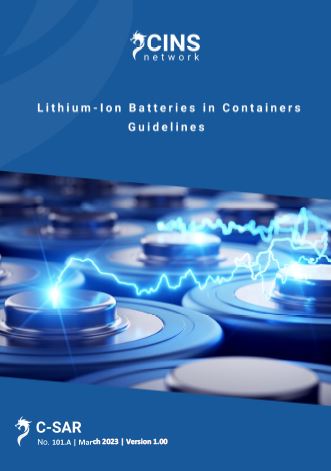Industry bodies unite in producing Guidelines for safe transport of Lithium-ion batteries in containers
First in a series of in-depth advisory publications aimed at minimising the risks of transporting lithium-ion batteries and cells launched amid heightened concern over container fires.
The Lithium-ion Batteries in Containers Guidelines seek to prevent the increasing risks that the transport of lithium-ion batteries by sea creates, providing suggestions for identifying such risks and thereby helping to ensure a safer supply chain in the future. Together with its partners, the Cargo Incident Notification System Network (CINS) has compiled a comprehensive publication covering the properties of these batteries and their potential to explode, initiate fires and emit toxic gases.
Extensive measures to safely transport what is an exponentially increasing volume of lithium-ion batteries, in their various states or charge and when also contained in electronic devices are fully examined including, classification and regulation, container packing, landside storage, stowage onboard ships, incident detection and fire suppression, and loss prevention and risk mitigation.
“We strongly urge all stakeholders in the production, supply, transport, handling and sale of lithium-ion batteries whether as individual components or integrated into an electronic device, vehicle or other product to recognise their responsibilities in maximising safety when in transit,” comments Dirk Van de Velde, who is Deputy Chair of CINS and a board member of the association of cargo handlers, ICHCA. “Our Guidelines will create greater awareness of the possibilities of the damaging and life-threatening incidents, which have already occurred, and instil more urgent motivation to act before more catastrophic disasters result.”
Intended as the first of an on-going series of publications to be updated as circumstances require this first, Lithium-ion Batteries in Containers Guidelines (101.A) provides a general overview, and will be followed by three further documents – regulatory compliance check-lists, risk assessment and emergency response, and training and educational awareness. Stakeholders in the supply chain are encouraged to implement the advice according to their specific operations and requirements but to always keep safety of life as their primary consideration.
For the full release click here
For the Lithium-ion Batteries in Containers Guidelines document click here

